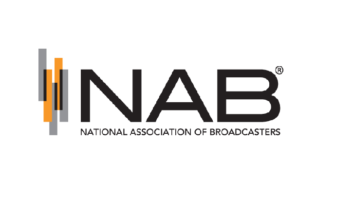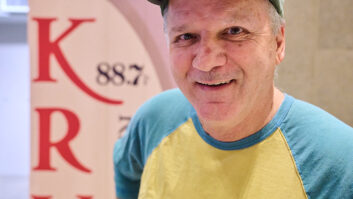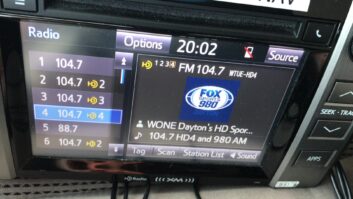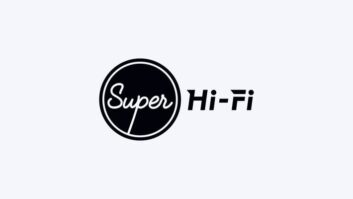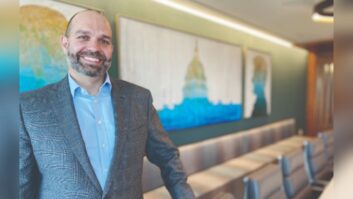Pandora founder and Chief Strategy Officer Westergren spoke with Radio World News Editor/Washington Bureau Chief Leslie Stimson at the January CES show, surrounded by several devices that now feature Pandora or will soon.
The personalized Internet radio provider continues to grow. The company claims to have 68 percent of the Internet radio marketplace. It’s in numerous devices; and an increasing number of automakers are including the app in their in-dash infotainment systems.

Tim Westergren
Detractors, including some in broadcast radio, say the company’s business plan will fail, that it will be strangled by music royalty fees; and anyway, they say, it’s not really “radio” but a jukebox-like service, lacking the personality or local service of traditional radio.
The majority of Pandora’s 125 million users sign up for the free version, which airs commercials, unlike the premium service. Pandora has been hiring sales people to sell against broadcast radio in local markets and is pitching spots to traditional radio advertisers like automakers, jewelry stores and grocers.
Pandora’s efforts have driven debate about how to compare radio and online listening data. Arbitron’s commercial radio clients asked the firm to calculate how many hours per month Americans listen to commercial radio; the answer was 14.6 billion hours, or 43.8 billion hours per quarter. Pandora in January told investors its listeners logged 2.1 billion listener hours during the third quarter, hours it says are equivalent to an average 700 million listener hours per month.
RW: I’ve heard you say you want Pandora to be everywhere: at home, in the car, wherever people are. You’re also hiring salespeople, to sell in local markets. So you’re going up against local broadcast radio?
Westergren: Absolutely, yes. We announced that we crossed over 125 million registered listeners recently. That translates into a pretty big audience, in every local market, once you get to that scale.
We’re at a point where it makes sense for us to think about, “Okay, what do we do in Kansas City? What do we do in Detroit … in Chicago, San Francisco, all these places, to take advantage of the local ad opportunity?” Because we are a big radio station, kind of everywhere now. It’s kind of changed the complexion of the business, once you reach that size. It’s not just a national service anymore.
RW: What kind of local markets are you targeting?
Westergren: We’re starting with the bigger ones right now. It’s kind of a way for us to create template and really refine the way we do it. But we’ll, as quickly as we can, start to roll that out. We close to doubled [listening hours] in the last year. If we keep growing like that, the opportunity for us, it’s here.
RW: How are you measuring your audience?
Westergren: There’s two different ways. The one that’s probably relevant is the monthly active, the comScore number [measuring] people coming each month. That’s the active audience. That’s the one we’re really selling against for an advertising agency. … comScore is measuring use. We have our own internal numbers, but they also are measuring use.
RW: What are they measuring?
Westergren: They’re measuring unique access to the website and on mobile [devices].
RW: So they’re keeping track of how many times people are pinging the service, and for how long?
Westergren: Yes, they don’t have time on-site. We look forward to the day when that becomes a well-known metric. We also just announced that the per-month average listening has gone up to 18 hours, average, now on Pandora. If you look at time spent, Pandora’s one of the top destinations, period.
RW: Arbitron in December came out with a caution to advertisers and others not to compare its PPM numbers to audience numbers for Internet or personalized radio services because they’re not the same. When you talk to potential advertisers, how do you describe your listening and measurement?
Westergren: For a while we really were bringing our own numbers, which is not ideal. Recently Edison did some work for us, some measurement themselves and published [it]. We’ve done this a few times now. So we’ve got a third party to come in and validate it. … It’s kind of our next best option.
Triton Digital has also; and Ando Media has put up their ranker numbers. Those have been useful; and I think the aggregate of those three things has brought a lot of pressure to bear on Arbitron to react. Ad agencies now, and clients, are saying, “Wait a minute. Why isn’t Pandora part of this, sort of, standard list of potential publishers, or radio services, for us to consider?”
I think that it’s just a matter of time, because this is where the audience is going. The ad community wants an accurate apples-to-apples comparison. It’s not surprising there’s resistance to that.
RW: Do you publish your methodology?
Westergren: Yes, it’s available. It’s log files and interestingly, Pandora is required to pay royalties per song. We are legally obligated to produce accurate reporting data for every song we play to the government. We have no incentive to over report our numbers. We pay per song. That core data is what Edison is using. [Edison Media and Pandora released audience data for Pandora in 11 radio markets in January. Read that at www.edisonresearch.com.]
RW: I’ve heard that what Triton is measuring is server files, so if someone is listening on the computer, they’re measuring how long they’re leaving it on. How do you know how many people are listening to that computer and are they really listening that entire time that connection’s open?
Westergren: … The thing about Pandora is we “time out” if you’re not interacting with it. It stops playing after 45 minutes if you don’t do something with it. So there’s some built-in mechanisms to prevent somebody from leaving it on and going on vacation.
RW: And getting credit for that listening.
Westergren: Exactly, because we’re motivated to not play to an empty room, because we pay [royalties] per song. A significant amount of our revenue now is coming from traditional, local advertisers: car dealerships, grocers, the staple of local radio. It’s taken some time but they recognize that it really is a viable medium for them to utilize.
RW: Meaning you’re taking market share away from local broadcasters.
Westergren: That’s where the money is.
RW: What about satellite radio. Is that a competitor?
Westergren: In the scheme of things, if you just look at overall market share, broadcast radio is north of 90 percent. We’re not competing with satellite. We’re competing with broadcast radio for listener hours.

Pandora in January published these listenership results and said it had reached an average quarter hour rating of 1.0 or more among adults 18–34 in the top radio markets.
RW: Automakers have told me they like including software apps in their large-screen in-dash infotainment systems so they can swap the apps in and out as they gain or lose popularity, rather than making hardware changes.
Westergren: Yes … I think that’s exactly what they want to do.
RW: How does that suit you?
Westergren: Just fine. We think we’re the best at what we do. We’re the best personalized radio product around. We’ve been at it for over 10 years, focused on just this particular thing. It’s taken an enormous amount of work on the musical side. …
The technology [underpinning] Pandora is a hand-built database. We’ve had a massive team of musicians analyzing music for years to build the Music Genome Project. And now we have a wealth of thumb data now from our listeners, billions of pieces of thumb feedback. That’s all been kind of evolving over the years into this product now.
Playing personalized radio is a really, really difficult thing to do well. I think it appears simple to a user. You drop in a song, drop in an artist and voilà, out comes stuff you like. But getting that right, and getting it right for the first hour, and for the hundredth hour and the sixth month … being able to do that consistently for all styles and all sorts of listeners is really difficult. That’s been our focus for a long time, so we are happy to be alongside other apps that have different options, whether it’s an Internet radio service, an HD, a broadcast re-stream, we’re happy to kind of compete directly.
RW: Do you have people programming your channels?
Westergren: We have some pre-programmed channels, genre stations, holiday music and so on. But the lion’s share of listening are our stations that are built on the fly, based on a person’s input. The way it fundamentally works is you type in a song that you like, and when you type in that song, it launches this playlist engine that matches songs and builds a playlist based on musical relationships. …
We’ve literally had musicians now for over 10 years listening to songs and scoring them along as many as 450 attributes per song, manually. [They’re] capturing every detail, a melody, harmony, rhythm and form, instrumentation. It’s like musical DNA. That forms a basis for kind of connecting one song to another in Pandora and sequencing a sensible playlist.
RW: Clear Channel’s Bob Pittman [the CEO of CC Media Holdings] is not a fan. He has said personalized services like Pandora are not radio; that they are basically jukeboxes. So, are you just a jukebox?
Westergren: I don’t think it really matters what he or we say about our own services, really. What matters is what listeners want. The numbers kind of speak for themselves, I think. You look at our growth and the fact that not only are we growing like a weed, but the per-month average is growing. The number of companies that want to embed Pandora is growing.
The reason car companies are putting Pandora in their cars isn’t because the CEO wants it, it’s because the people who buy their cars want it. That’s the same thing for all these devices [gesturing around the room]. There have been studies conducted saying people won’t buy a device unless it’s Pandora-enabled. All this other kind of stuff is noise. Look at the numbers. That speaks loudly.
RW: You were at 75 million last CES, now you’re 125 million listeners. How do you quantify the numbers?
Westergren: Those are registered listener numbers. That means people have come onto Pandora, listened to music and created an account. That doesn’t mean they’re actively listening now. It’s the distance between that and our monthly unique, which you could argue is kind of the real material number. It’s the number that matters to advertisers, for example.
But that number’s growing just as fast. We know how many come onto Pandora, how long they listen, what they listen to every month. We have a pretty solid way to quantify listening. It’s really notable that, on an audience basis, as near to apples-to-apples you can get, we’re like a big radio station in every market now.
RW: You’re concentrating your sales efforts in the largest markets initially?
Westergren: To begin with. I think you’ll see that over time any place that has a reasonable advertising base, we’ll go to.
RW: How many salespeople do you have?
Westergren: We don’t break out our staff by function but it’s a huge part of our headcount. [Pandora has 400 employees.]
RW: Are they coming from traditional radio?
Westergren: A lot of them are. We’re big believers in borrowing the wisdom of the industry that’s come before us. We have people, not only in ad sales, we also have people helping with our playlists that are radio DJs.
RW: So you think Pandora is the future of radio?
Westergren: I think personalized radio is the future and I think we’re the best at it. That’s what I’d say. And it’s not an easy thing to do well.
RW: That’s throwing down the gauntlet, there.
Westergren: I make no bones about it. The numbers say a lot. Listeners are discovering it. When I use Pandora in a car — I don’t drive a whole lot, but when I use it, I don’t listen to broadcast radio much anymore, because now I can get the music I like in my car, in a radio experience, not my playlist, not like my MP3 collection, because you tire of that after awhile.
I can get a radio that I like, consistently in the car. I’m not going back. That’s what we’re seeing with listeners. Again, technology is enabling that transition now. The philosophy of this stuff is extraordinary. We went from four car companies to 16 since last CES. And we went from about 200 to over 450 devices in just a year, which tells you that there’s a big appetite that these companies are racing to meet.
RW: How would you compare your company to a company like Jelli? They call themselves personalized radio also. Rockets up, rockets down is their version of the thumbs up and down. It’s also a social experience where the listeners chat with each other over the Web and say “I like this one” and they can shoot a song up the list.
Westergren: It’s very interesting to incorporate the social element into the radio experience. I think just how best to do that is still an open question that people are figuring out.
We redesigned Pandora just a few months ago. Part of the incentive was to really put a much stronger social element to it. The thing about music listening is it’s social but it’s also very personal in a funny way. …
It’s less of an obvious social phenomenon than people might think on the surface. Let’s say you walk around, you’ve got your iPad on, would you want people to hear what’s playing on your iPod? I’d say no, not really. That’s the thing. Do you want people to see what your CD collection has in it? Not really. People are self-conscious about it in a funny way.
RW: When you meet with automakers, what do they say is important to them? I understand they’re putting all these personalized Internet radio apps in the dash because people who buy cars want it, but what do they tell you?
Westergren: “We want it yesterday,” is one. And the second thing is, “How do we do it in a way that’s elegant and driver-safe?” Those are important criteria. By elegant I mean easy, intuitive, simple to use.
RW: HD Radio and satellite radio and you are all in the dash. You’re all vying for the listener’s time and attention in the car.
Westergren: That’s why we have a saying at Pandora: “It’s the playlist, stupid.” Ultimately — we’re called Pandora so I should say “she” — she who delivers the best listening experience will prevail.
Comment on this or any story. Send a letter to the editor to [email protected].






